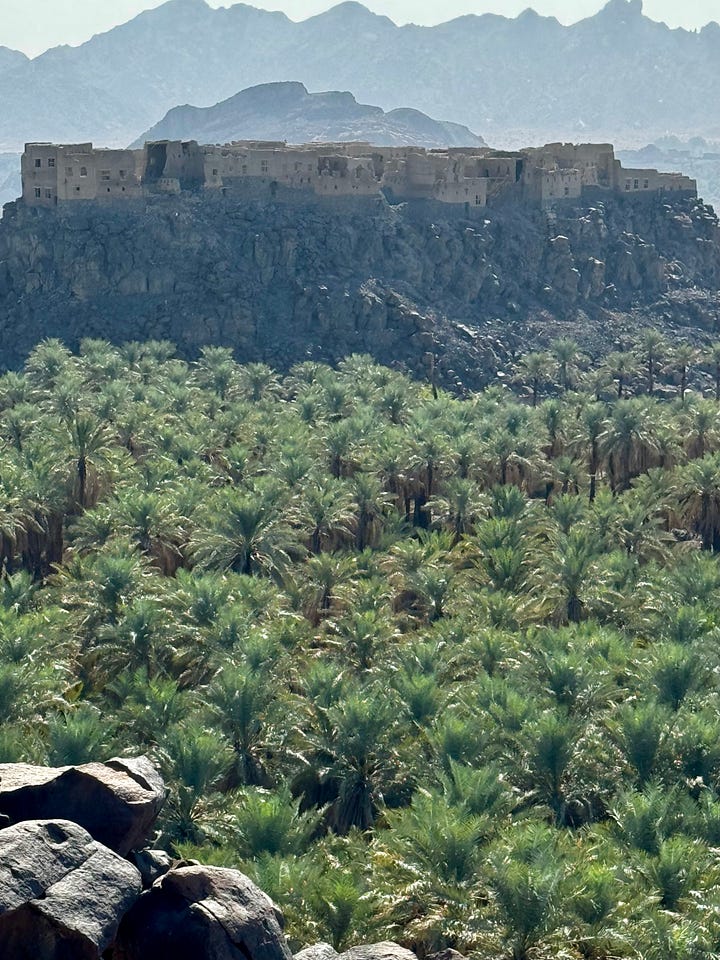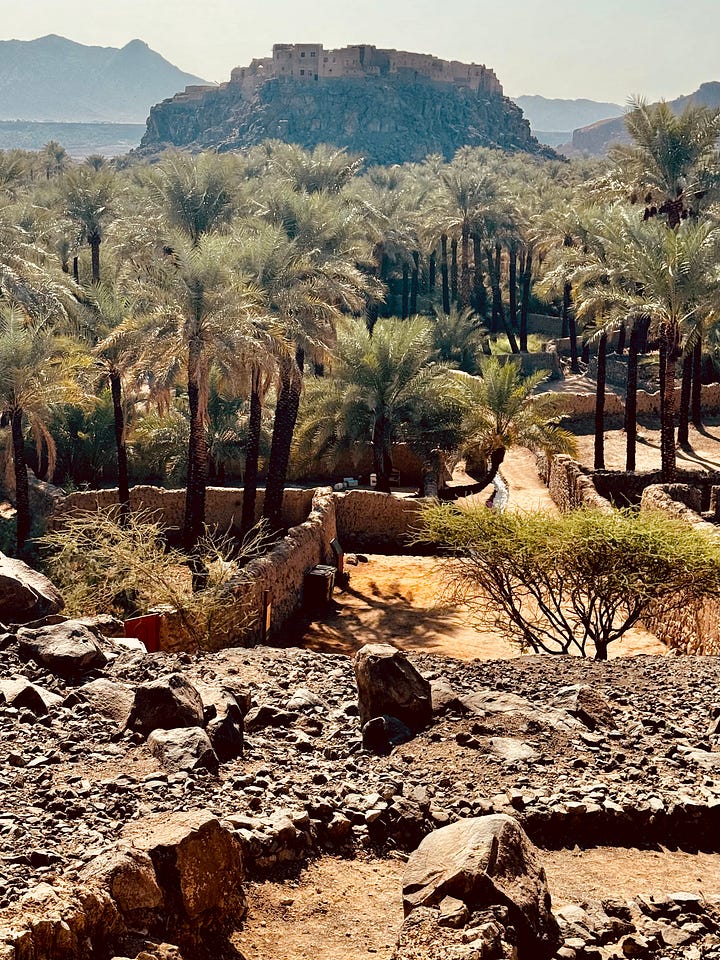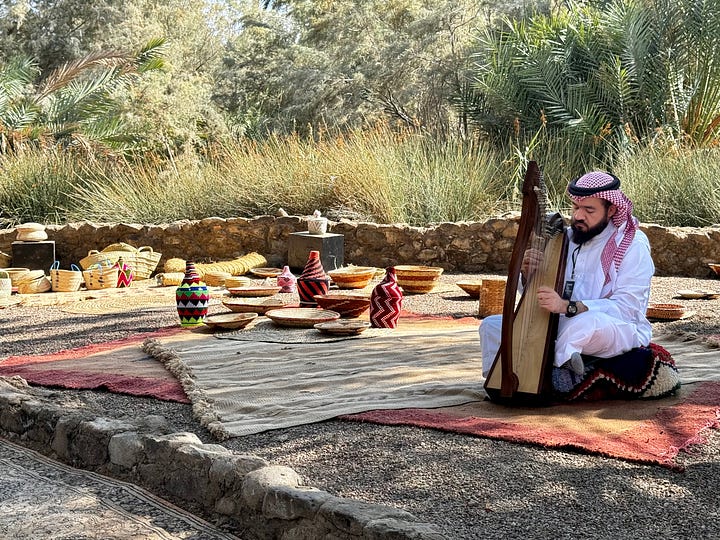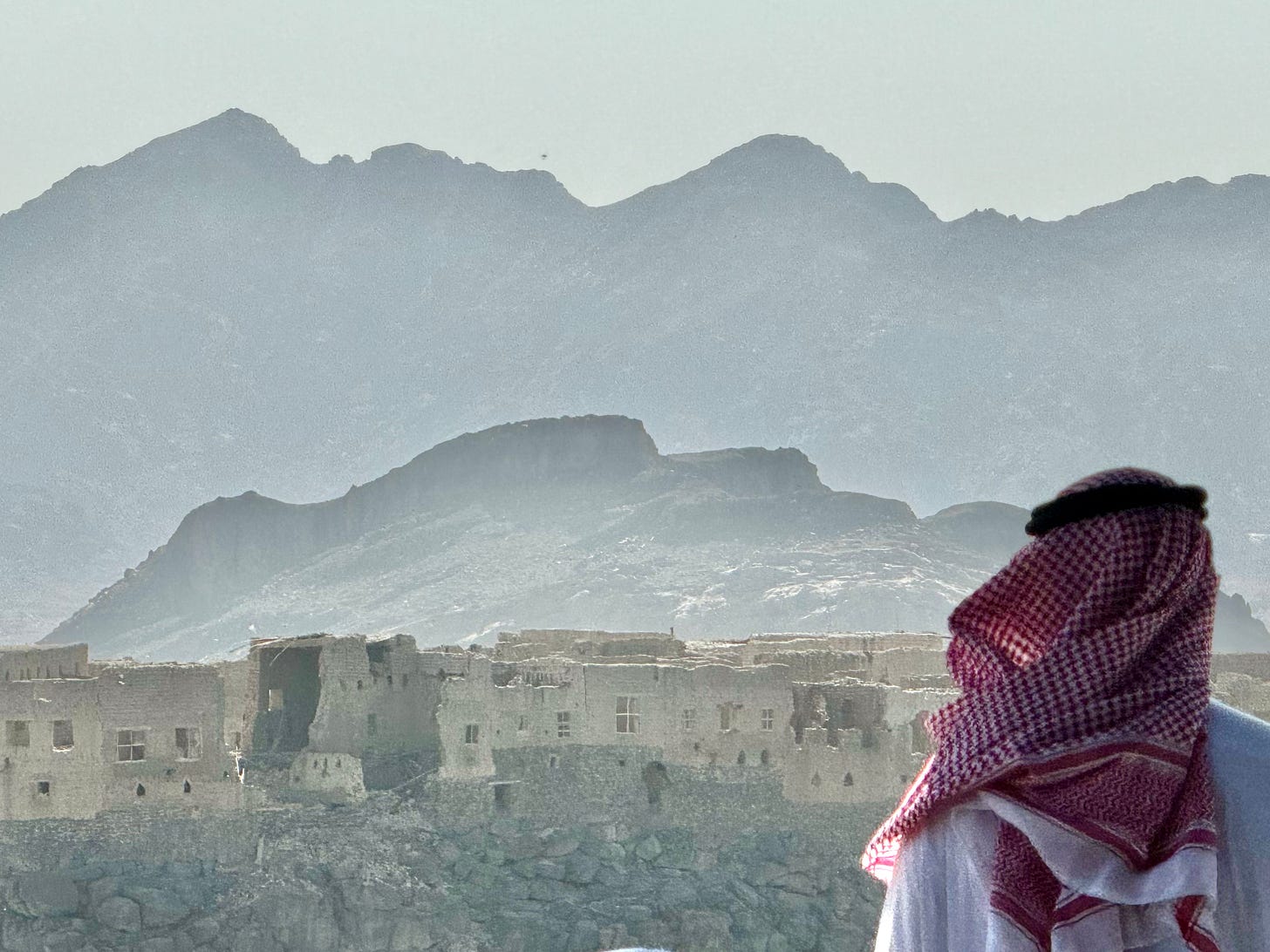Khaybar Oasis: Where the Jewish and Muslim Faiths First Met, Clashed, and Coexisted
A Jew's journey to Khaybar, the ancient oasis where the first ever conflict and peace treaty between Jews and Muslims unfolded in 628 C.E.
📍 Khaybar, Saudi Arabia
Khaybar, a sun-baked oasis of date palms and crumbling fortresses in Saudi Arabia, is more than an archaeological site. It's a powerful symbol of the intertwined narratives of Jews and Muslims. As one of the first Jews to visit the newly accessible ruins of Khaybar, where the Prophet Muhammad defeated Jewish tribes in 628 C.E., I was struck by a profound realization: The current Israeli-Palestinian conflict, often dominating headlines, is but a recent chapter in a centuries-long saga of interaction, cooperation, and occasional discord between the two faiths.
Muhammad's victory in this once-thriving Jewish settlement laid the foundation for the complex relationship between the faith communities that continues to this day. In the timeworn ruins of Khaybar, amidst the stone dwellings and ancient irrigation channels, I felt a sense of shared heritage that transcends the dominant narratives of conflict and resonates with the legacy of the Jewish tribes that lived in the Arabian Peninsula for generations.
The Saudi curation of Khaybar casts the site as a cradle of ancient civilizations, not as a battleground. This framing, which emphasizes the oasis's existence since the dawn of humanity and its place in our shared human heritage, aligns with Saudi Arabia's ambitious Vision 2030 plan to diversify its economy through tourism and promote cultural inclusivity. Khaybar, in this light, should remind us that our faiths are intertwined not just by the battles we've fought, but by the countless lives we've lived together.
As I wandered through the weathered ruins, I was intrigued by this narrative. The visitor experience was immersive theater that resurrected the ambiance of Khaybar's ancient, pre-Islamic civilizations. Women, some without headscarves, narrated history and extended hospitality, while men strummed ancient instruments before offering generous servings of tea and locally grown dates. This intentional focus on what Khaybar was for most of its history — rather than one formative interfaith flashpoint — softened the weight of the oasis's more recent chapters, which loomed larger for me as a Jewish visitor.
Indeed, archaeological evidence here reveals a history stretching back over 5,000 years, with traces of human habitation dating to the Neolithic period. The fertile soil and abundant water sources made the oasis a vital hub for agriculture, trade, and cultural exchange for millennia. The ruins I explored were not just remnants of a Jewish settlement, but layers of history, each whispering tales of civilizations that thrived and faded in this desert landscape. Khaybar is as fundamental to Jewish-Muslim relations as it is to humanity itself.




But still, the echoes of the Battle of Khaybar reverberate through modern Middle Eastern conflicts, from the streets of Gaza to the hills of Lebanon. The memory serves as a rallying cry in contemporary flashpoints between the Jewish state and its Muslim-majority neighbors. During the First Intifada, Hamas drew inspiration from Khaybar, urging Palestinians to reinterpret the past for present resistance — with the slogan “Khaybar Khaybar O Jews, the army of Muhammad shall return.” Hezbollah, in the 2006 Lebanon War, named missiles after Khaybar, imbuing their actions with potent historical symbolism. Even further afield, the naming of the Khyber Pass on the Pakistan-Afghanistan border by medieval Muslim conquerors in India underscores Khaybar's enduring legacy.
However, amidst the fervor of conflict, it's crucial to remember that the historical meaning of Khaybar diverges from the modern weaponization of its symbolism. While the battle holds significance as a moment of conquest in early Islamic history, it does not encapsulate the long-term intentions of Prophet Muhammad. His recognition of Jews as protected “People of the Book” and his marriage to Safiyyah bint Huyayy, a Jewish woman who became his wife after the battle, illustrate a more nuanced relationship between Islam and Judaism. Safiyyah's marriage is often cited as an example of the prophet’s efforts to foster reconciliation and peaceful relations with Jewish tribes in the wake of conflict.
Khaybar was not only the site of the first Jewish-Muslim conflict, but also the first treaty between the faith communities. Despite the defeat of Jewish tribes and subsequent tribute obligations to the Muslim polity, a period of coexistence followed, with Jews continuing to live and work in the region. The Islamic Golden Age, spanning the 7th to 13th centuries, witnessed a flourishing of Jewish intellectual and cultural life under Muslim rule as “People of the Book.” This period of relative tolerance and exchange starkly contrasts with the persecution and discrimination Jews experienced in many parts of Christian-ruled Europe during the same era, marked by the Crusades and Inquisition. While contemporary conflicts may draw selectively from the symbolism of Khaybar, they often overlook the full context of the battle and its aftermath.
The Ottoman Empire, which controlled much of the Middle East from the 15th to the early 20th centuries, continued this tradition of relative tolerance. Jewish communities thrived in cities like Istanbul, Salonica, and Jerusalem, benefiting from policies granting them religious and cultural autonomy. This era of peaceful coexistence stands as a powerful counterpoint to the weaponization of Khaybar in contemporary conflicts and serves as a reminder of the potential for mutual respect and understanding between the two faith communities.
The story of Khaybar is not a simple binary of conflict versus coexistence. Visiting the oasis and absorbing its full complexity challenged me to look beyond simplistic inter- and counter-faith narratives. The legacy of the events that transpired here predates, and may well outlast, the struggles that currently grip the region. Our shared history and humanity are far richer and more complex than any single conflict.






Really enjoyed the read and education!